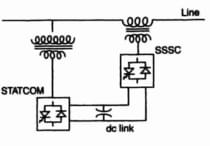 |
| Digital Electronics MCQs |
1. How many flip-flops are required for Mod-16 counter?
a. 5
b. 3
c. 6
d. 4
2. A ring counter consisting of five flip-flops will have______.
a. 10 states
b. 5 states
c. infinite states
d. 32 states
3. If the input to T-flip flop is 100 Hz signal, the final output of the three T-flip flops in cascade is______.
a. 12.5 Hz
b. 500 Hz
c. 1000 Hz
d. 333 Hz
4. A 4-bit synchronous counter uses flip-flops with propagation delay times of 20 ms each. The maximum possible time required for change of state will be____.
a. 10 ns
b. 30 ns
c. 20 ns
d. 60 ns
5. How many flip-flops are required to construct a decade counter?
a. 4
b. 2
c. 10
d. 3
6. If the clock input applied to a cascaded Mod-6 and Mod-4 counter is 48kHz, the output of the cascaded arrangement would be_____.
a. 12 kHz
b. 8 kHz
c. 4.8 kHz
d. 2 kHz
7. For what minimum value of propagation delay in each FF will a 10-bit ripple counter skip a count when it is clocked at 10 MHz?
a. 100ns
b. 5 ns
c. 10 ns
d. None of these
8. A binary ripple counter is required to count up to 16,383₁₀ . If the clock frequency is 8192MHz, what is the frequency at the output of the MSB?
a. 500 kHz
b. 150 kHz
c. 225 kHz
d. 625 kHz
9. A 25 : 1 ripple counter is required. If 4 flip-flops are available on a chip, how many chips are needed?
a. 3
b. 1
c. 2
d. 25
10. Minimum number of J-K flip-flops needed to construct a BCD counter is______.
a. 5
b. 4
c. 3
d. 2
11. The decoding error of the counter can be avoided by______.
a. Increasing propagation delay of flip-flops used in the counter
b. Using very fast logic
c. Using the strobe signal
d. Reducing the propagation delay of flip-flops used in the counter
12. A switch tailoring counter is made by using a single D-flip-flop. The resulting circuit is a______.
a. SR flip-flop
b. JK flip-flop
c. D flip-flop
d. T flip-flop







0 Comments
If you have any doubt, feel free to ask.